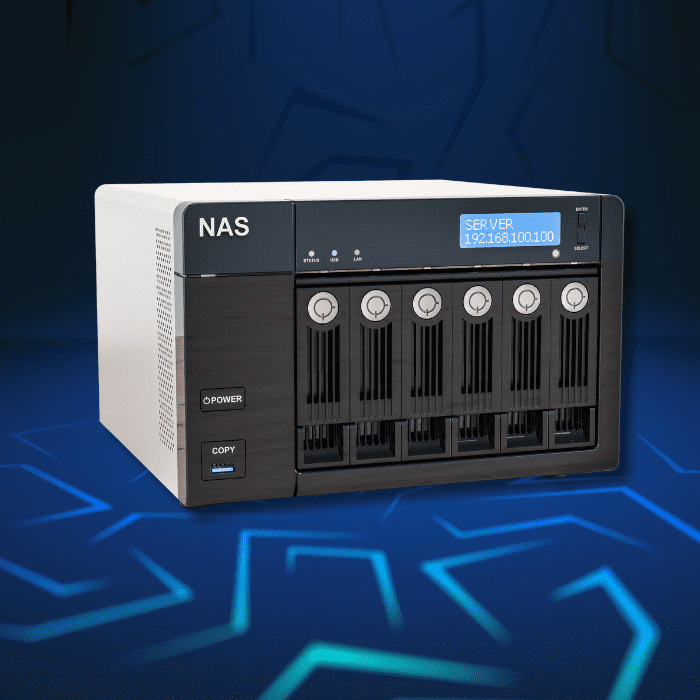SSDs (Solid State Drives) are popular data storage devices due to their speed and energy efficiency. However, like all electronic devices, they have a limited lifespan. There are some factors that can affect the durability of an SSD, such as the number of write cycles, temperature and storage conditions. It’s important to consider these factors to ensure that your SSD lasts as long as possible. In addition, there are some measures you can take to increase the lifespan of your SSD. For example, keeping the disk at room temperature and avoiding mechanical shocks. In this article, we’ll explore these topics in more detail and provide some tips to help maximize your SSD’s lifespan.
What is an SSD?
The SSD is a data storage device that offers better performance than disks. The main difference between an SSD and a disk is that the SSD has no moving parts in its internal structure. This considerably reduces the risk of mechanical failure, since there is no internal movement of the parts. Flash memory and the controller are usually the main components of the most common SSDs. They work as follows: The flash memory stores all the files and data. This is its main responsibility. It makes reading and writing operations faster, as it operates electrically, and makes the device more resistant to vibrations and falls. The controller, on the other hand, is the middle ground between the flash memory and the computer. It manages the exchange of data, guaranteeing the performance of the SSD and the useful life of the flash memory.
What is the lifespan of an SSD?
One factor that leaves many users in doubt about buying an SSD is the useful life of the hardware. The SSD was launched on the market around the 1990s, so the technology has only just reached its 30th anniversary, meaning that claiming that its useful life will exceed this milestone is nothing more than an estimate. However, even if you’re an advanced user, your SSD should continue to work for many years to come. A study by The Tech Report carried out an endurance test and showed that manufacturers guarantee a much shorter lifespan than the actual lifespan of the technology. For example, Intel estimates a 3-year lifespan for its SSD with an average of 20 GB of data written per day, which would result in only 22 TB of data being written. This represents just 3% of what the SSD managed to achieve in The Tech Report’s test. According to the research, if you use an SSD extremely intensively, writing and deleting 256 GB of data every day, the drive will still be able to continue working for another 22 years. In other words, by then, the market will have launched new technologies and upgraded your SSD. An important curiosity of the SSD is that it doesn’t wear out when reading files, only when writing them.
How do I calculate the lifespan of my SSD?
To calculate the lifespan of your SSD, you’ll need to consider the number of write cycles the device supports. The number of write cycles is the number of times a block of data can be written and erased before it fails. Each SSD manufacturer provides information on the number of write cycles their disk supports. For example, a disk that supports 100,000 write cycles can be written and erased 100,000 times before it fails. In addition to the number of write cycles, another factor to consider is the amount of data you write to the disk every day. If you write a lot of data to the disk every day, this can reduce the number of remaining write cycles and, consequently, shorten the disk’s lifespan. On the other hand, if you write less data to the disk, this can increase the disk’s lifespan. To calculate approximately how long your SSD should last, you can use the following formula: (Number of disk write cycles / Amount of data written per day) * 365 days = Disk life in days. For example, if a disk supports 100,000 write cycles and writes 50 GB of data every day, the useful life of the disk would be approximately 2,000 days, or about 5.5 years. It’s important to note that this is only an estimate and the actual lifespan of your SSD may be longer or shorter depending on other factors, such as temperature and storage conditions.
What ruins an SSD?
You can certainly help extend the life of your SSD by avoiding certain actions. So pay attention to the points we’ve listed here so as not to repeat them:
- Defragmenting: there is no gain from defragmenting an SSD. What’s more, information can move around during defragmentation, causing unnecessary writes to take place and reducing the lifespan of the SSD;
- Use all available space: leave at least 25% free space on your SSD. The fuller it is, the slower your SSD will be;
- Using your SSD with a very old operating system: older operating systems were developed with a greater focus on disks. This can lead to a loss of performance and even compromise the lifespan of your SSD.
How to extend the life of an SSD?
In addition to avoiding the points we’ve outlined above, there are other actions you can take to increase the lifespan of your SSD. Check them out below and be sure to put them into practice!
Don’t clean empty areas
This was often a requirement of old disks, as it meant that the drives gained more space. However, SSDs are TRIM-enabled, so deleted files are actually deleted. In this way, not only is wiping useless, but it can also wear out the SSD with an overload of operations.
Activate TRIM
Check that the TRIM command is active. It is essential for the SSD, as it generates more free space, increases its performance, causes fewer erase cycles to be used and increases the lifespan of the SSD. To confirm that TRIM is enabled, follow this step-by-step guide:
- Use the WinKey + X key combination and click on “Command Prompt (Admin)”, open the prompt with administrator permissions. Remember to give permission before continuing;
- In the Command Prompt window, type the following, without the quotes: “fsutil behavior query disabledeletenotify” and press “Enter”;
- If the answer is DisableDeleteNotify = 0, TRIM is enabled. If =1, it is disabled.
If the answer shows that TRIM is disabled, it may be that the SSD doesn’t support this function. Go to the manufacturer’s website and check if there is a firmware update that implements TRIM support.
Leave some free space
New files and uploads require free space to work properly. So don’t fill up all the capacity on your SSD. As we said above, the ideal is to leave at least 25% free space to preserve the life of the SSD.
Don’t write constantly
Avoiding writes is a good way to increase the lifespan of your SSD. This means that fewer files are written to the devices, keeping them as read-only drives. Only save operating system files, software, games and data that you want to access quickly. The ideal is to save files that you want to access easily and frequently. This tip applies to anyone who uses an SSD in conjunction with a disk.
The SSD should not be defragmented
Once again, we’ve hit the nail on the head. The SSD process differs from the disk process in that data writing and reading is improved by defragmentation. However, SSD technology has no mechanical parts but electronic ones.
SSD advantages
SSDs (Solid State Drives) offer several advantages over traditional hard disks. Here are three of the main advantages of SSDs:
- Speed: SSDs are much faster than traditional hard disks. They can read and write data much faster, which makes them ideal for tasks that require high performance, such as loading games or programs.
- No noise: SSDs have no moving parts, which means they produce no noise while in use. This makes them ideal for use in desktops or laptops, as they don’t produce any noise while working.
- Compact: SSDs are much more compact than traditional hard disks. They take up much less space, which makes them ideal for use in portable devices such as laptops and tablets. In addition, SSDs are less prone to damage from mechanical shocks, which makes them ideal for use in highly mobile devices.
Disadvantages of SSD
However, they also have some disadvantages that should be considered. Here are two of the main disadvantages of SSDs:
- Cost: In general, SSDs are more expensive than traditional hard disks. They have higher prices per storage unit, which can be a problem for those who need a lot of storage space. However, with the popularization of this storage option, the price of SSDs has fallen a lot in recent years, and you can find low-cost options in various storage capacities.
- Storage capacity: Although SSDs are available in a variety of storage capacities, they are still not as capable as traditional hard disks. Hard disks are still the cheapest option for storing large amounts of data. However, as SSDs are much faster than hard disks, many people choose to use an SSD as their main drive and a hard disk as their long-term data storage drive.
The SSD’s lifespan has come to an end, what do I do?
If the life of your SSD has come to an end, don’t despair – we at Bot can help you! We are a company made up of data recovery specialists and we respect international certifications so that the work takes place in a safe environment. We act efficiently and assertively, from analysis to document delivery. Our recovery is done quickly, because we take our commitment to deadlines very seriously. We offer a free quote and free collection from any address in Portugal! Our process works like this: after filling in the form, we will receive the device where the lost files were and then identify the problem and the best procedure for recovering accidentally deleted or lost files.
- If you are interested, start the process here.
Finally, we hope you’ll follow these tips to get the most out of your SSD. And if you need help, now you know where to find it! Be sure to keep following our content for more tips like this.
-->



